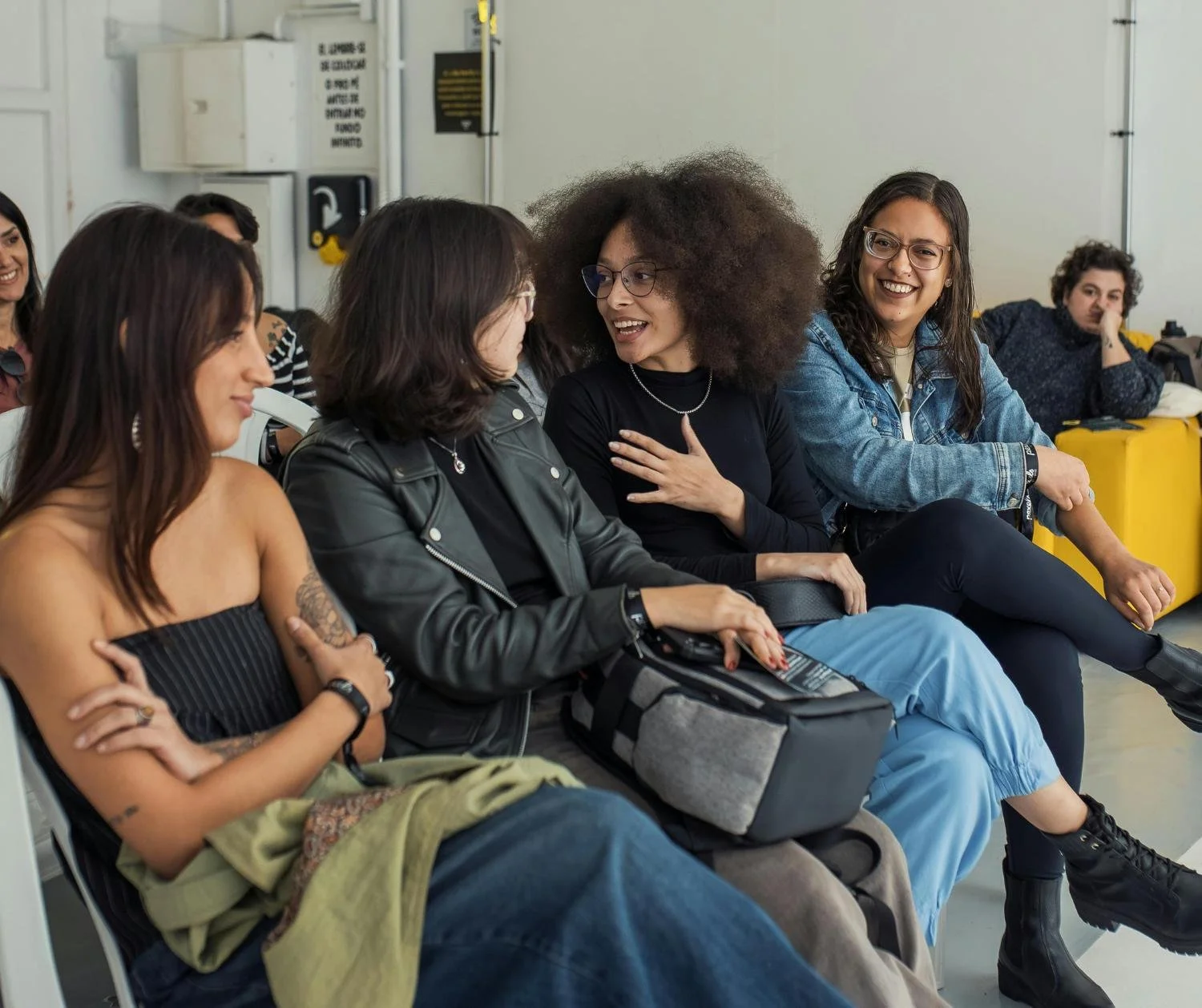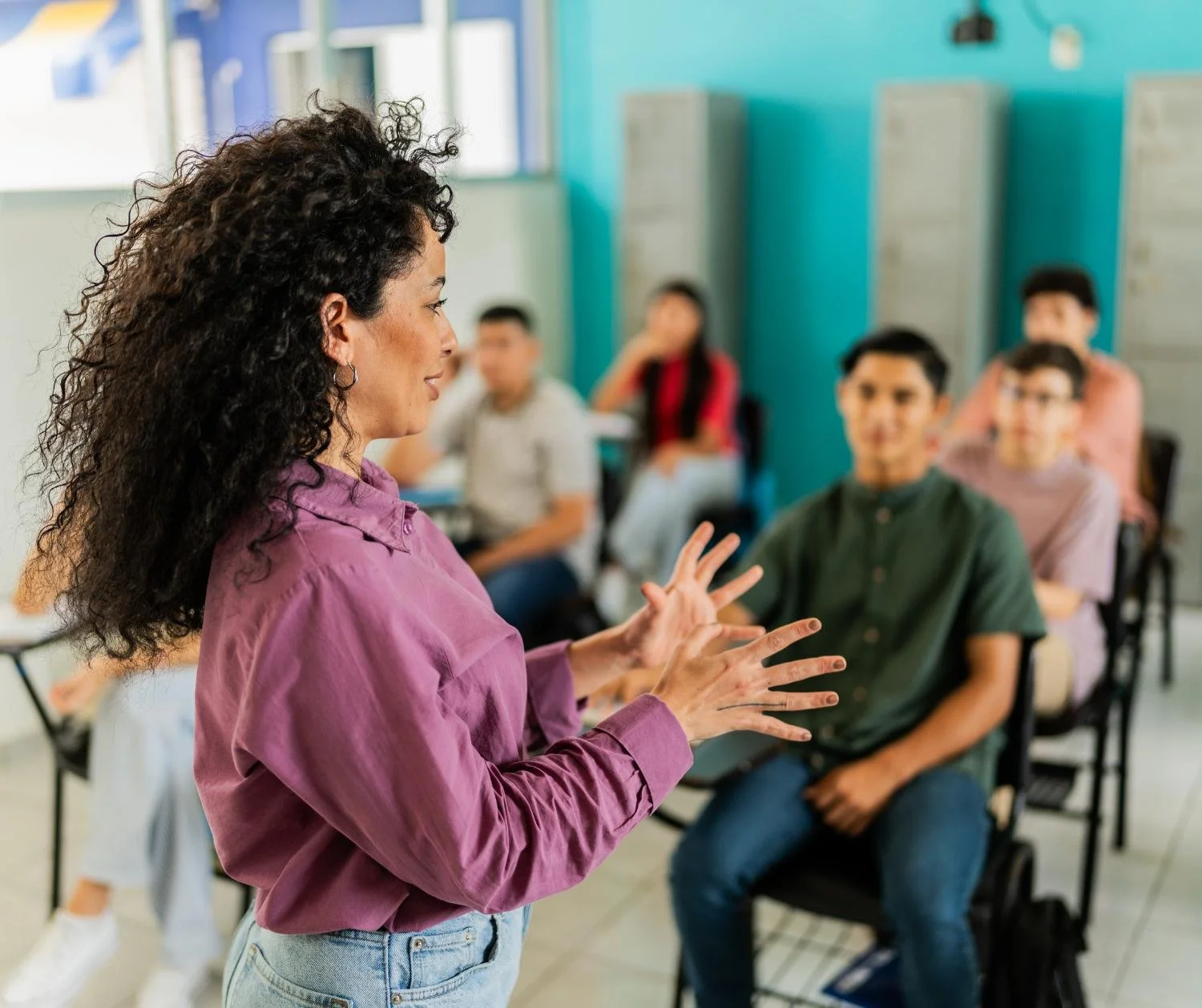Nonverbal Communication Training for Adults and Teenagers
Every gesture, expression, and tone of voice sends a message before a single word is spoken. Nonverbal communication shapes how people connect, express emotion, and understand one another. Research shows that much of what we communicate comes through cues such as facial expressions, posture, and vocal tone, often more than from words themselves.
When these signals are missed or misread, conversations can feel awkward, strained, or unclear. By learning to read and use nonverbal behaviors effectively, people of all ages can strengthen confidence, build better relationships, and feel more understood in personal, social, and professional settings.
Nonverbal communication training helps teenagers and adults notice and practice these silent signals. For anyone who has ever wondered how their gestures, tone, or eye contact affect others, this type of coaching provides practical guidance for communicating with clarity and purpose.
Key Takeaways
Teaching nonverbal communication improves understanding of body language, tone of voice, facial expressions, and other nonverbal cues that influence every conversation.
Building nonverbal communication skills helps people express emotions clearly and accurately read the feelings of others.
Practicing correct posture, eye contact, and gestures helps improve confidence in both personal and professional communication.
Communication coaches and speech therapists teach how to identify, interpret, and purposefully express nonverbal signals.
Understanding Non-Verbal Communication and Its Impact
Building Strong Nonverbal Communication Skills
Practical Tips for Nonverbal Communication Training
Frequently Asked Questions About Nonverbal Communication Training
Understanding Non-Verbal Communication and Its Impact
Nonverbal communication includes all the ways people share messages without words, such as body language, facial expressions, eye behavior, personal space, physical contact, and vocal tone. Each cue adds meaning to what we say.
We all use nonverbal communication every day, often without realizing it. A smile can show friendliness, a shrug can express uncertainty, and leaning forward may signal interest. Becoming more aware of these patterns makes conversations feel smoother and more genuine.
The Importance of Body Language in Everyday Communication
Body language, including gestures, posture, and overall movement, can send strong signals. The way you sit, stand, or move can show confidence, openness, or discomfort.
With guidance, you can learn to use body language that matches the message you want to send. Becoming more aware of others’ body language also helps build stronger, more meaningful connections in everyday life.
Facial Expressions and Eye Behavior in Nonverbal Communication
Facial expressions often reveal what words cannot. A smile can share warmth, while raised eyebrows might show curiosity or confusion.
Eye contact is equally important. Maintaining it shows focus and trust, while avoiding it can be read as nervousness or distraction. Practicing comfortable, balanced eye contact can make conversations more engaging.
Tone of Voice and Vocal Cues for Effective Communication
Your tone adds emotion and meaning to your words. It includes pitch, pace, and volume. A calm, steady voice can put others at ease, while a rushed or sharp tone might sound impatient or stressed.
With practice, you can learn to adjust your tone to match your intention better, helping you communicate your feelings more naturally and avoid misunderstandings.
Personal Space and Physical Contact in Nonverbal Interactions
Personal space matters in every interaction. Standing too close can feel overwhelming, while too much distance may come across as disengaged.
Coaching can help you learn to respect personal space and adjust to different settings, such as school, work, or social gatherings. Knowing when a handshake, pat on the back, or simple nod fits the situation helps people communicate nonverbally in ways that make sense for the setting and the relationship.
Building Strong Nonverbal Communication Skills
Improving nonverbal communication takes time, practice, and self-awareness. Communication training often includes activities that focus on gestures, posture, tone of voice, and other silent signals that shape how we connect with one another.
Learners practice with real-world examples such as greeting a friend, joining a group conversation, or presenting ideas in class or at work. These examples highlight how body movement, vocal tone, and facial expression all contribute to clear, confident communication.
With practice, both teens and adults build the ability to express themselves more naturally while also noticing and interpreting the cues of others.
Recognizing Nonverbal Cues and Behaviors
The ability to recognize nonverbal cues helps people understand the meaning that words alone can’t express. A slight change in facial expression or voice can communicate an entire feeling.
Training provides opportunities to notice signals such as hand gestures, eye contact, and physical distance. Learners also explore different types of nonverbal signals and connect them with emotions like happiness, worry, or curiosity.
This skill helps individuals read intentions accurately and respond with empathy and understanding.
Expressing Nonverbal Behaviors with Confidence
Effective nonverbal communication depends on both awareness and expression. Matching verbal words with supportive gestures and tone improves how messages are received.
Speech therapists guide students through speech therapy activities that combine verbal and nonverbal communication. For example, practicing encouragement with both a warm smile and an encouraging tone reinforces consistency.
Aligning nonverbal and verbal behaviors builds trust and helps people communicate with authenticity.
Improving Body Language in Public Speaking
Check out our blog on improving body language for more information!
Practical Tips for Nonverbal Communication Training
1. Notice your own signals
Start by becoming aware of how you use nonverbal communication cues such as gestures, posture, and eye contact in daily conversations. A video recording or simple self-check can help highlight habits you may not notice in the moment.
2. Explore eye contact and expressions
Eye contact and facial expressions can help show connection, but not everyone is comfortable using them in the same way. Practicing balanced eye contact or experimenting with expressions like a smile or nod can help if you want to strengthen these skills, but it’s also valid to communicate in other ways.
3. Posture as a communication tool
Posture and movement can send messages before words do. Standing tall or facing the person you’re talking to often signals interest and openness. These are tools you can use if your goal is to convey confidence.
4. Be mindful of tone of voice
Your tone communicates emotion before your words are fully understood. Paying attention to pitch, pace, and volume can help you match your tone to your intention. If you want to practice clarity or calmness, adjusting tone can be helpful.
5. Respect personal space
Everyone has different comfort levels with distance and touch. Standing too close may feel intrusive, while too much distance can feel disengaged. Most people feel more comfortable when others are sensitive to these boundaries, especially in new or professional settings. That said, personal space preferences vary widely, and learning to adapt is about respect rather than rigid rules.
Frequently Asked Questions About Nonverbal Communication Training
1. What is nonverbal communication training?
Nonverbal communication training helps people recognize, interpret, and use cues like body language, facial expressions, and tone of voice to support clearer communication. It also explores posture, gestures, and eye contact. The goal is to offer practical strategies that help you feel more confident and effective in everyday communication.
2. Who benefits from nonverbal communication training?
This training can be helpful for both adults and teenagers. Students, professionals, and anyone interested in strengthening their communication skills can benefit. It is especially useful for people who want support in expressing themselves or understanding the unspoken signals of others.
3. How long does nonverbal communication training take?
The length of training depends on each person’s goals, learning style, and how much they practice. Some people notice changes after just a few weeks, while others choose to continue building skills over several months. Coaches and speech-language pathologists adjust the pace to support steady progress.
4. Can nonverbal communication training help at work or school?
Yes. Learning to use nonverbal communication effectively can make a difference in both school and workplace settings. Skills like reading tone, using gestures purposefully, and maintaining a confident posture can support leadership, teamwork, participation in class, and stronger first impressions.
5. Is nonverbal communication the same as body language?
Body language is one part of nonverbal communication, but it is not the whole picture. Nonverbal communication also includes facial expressions, tone of voice, eye contact, and personal space. Together, these different signals help express emotion, personality, and intent without relying only on words.
How Connected Speech Pathology Can Help
Connected Speech Pathology offers online nonverbal communication training for both adults and teenagers. Our licensed speech-language pathologists and communication coaches create personalized programs that focus on each person’s unique goals and communication style.
Sessions are tailored to help clients build awareness of facial expressions, tone of voice, body language, and personal space. Practice activities reflect real-life situations such as conversations with friends, participating in class, or professional interactions at work.
Because Connected Speech Pathology delivers services entirely online, people can conveniently learn and strengthen nonverbal communication skills from home, school, or work, with support tailored to their individual needs.
Summary
Nonverbal communication training helps people share their thoughts and feelings more clearly while also noticing the intentions of others with greater ease. Learning to recognize body language, facial expressions, and vocal tone can make everyday interactions feel more genuine and meaningful.
Exploring posture, gestures, and personal space gives people tools to show confidence and connect comfortably in different settings. Every movement and expression carries emotion, often adding depth to what words alone can communicate.
With guidance and practice, both teenagers and adults can strengthen relationships, express themselves more openly, and build confidence in the way they interact with the world around them.
About the Author
Allison Geller is a communication coach, speech-language pathologist, and founder of Connected Speech Pathology, an international online practice providing professional communication coaching and speech therapy for children, teens, and adults. With more than two decades of experience, she has worked in medical and educational settings, published research on aphasia, and leads a team of specialists helping clients improve skills in public speaking, vocal presence, accent clarity, articulation, language, fluency, and interpersonal communication.








